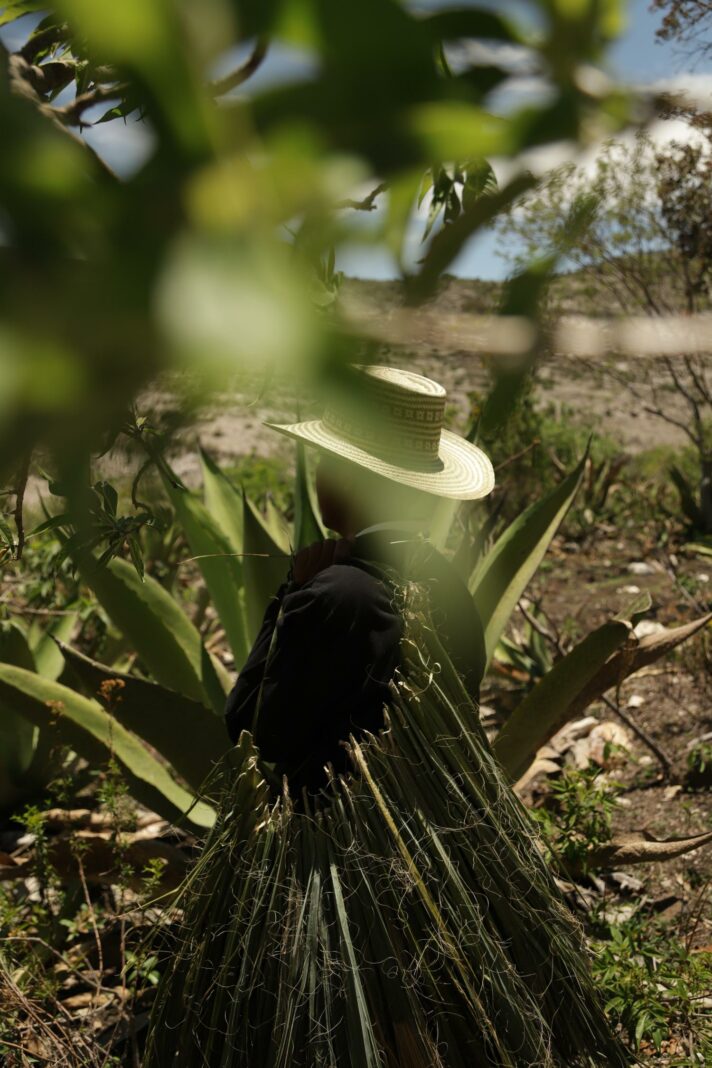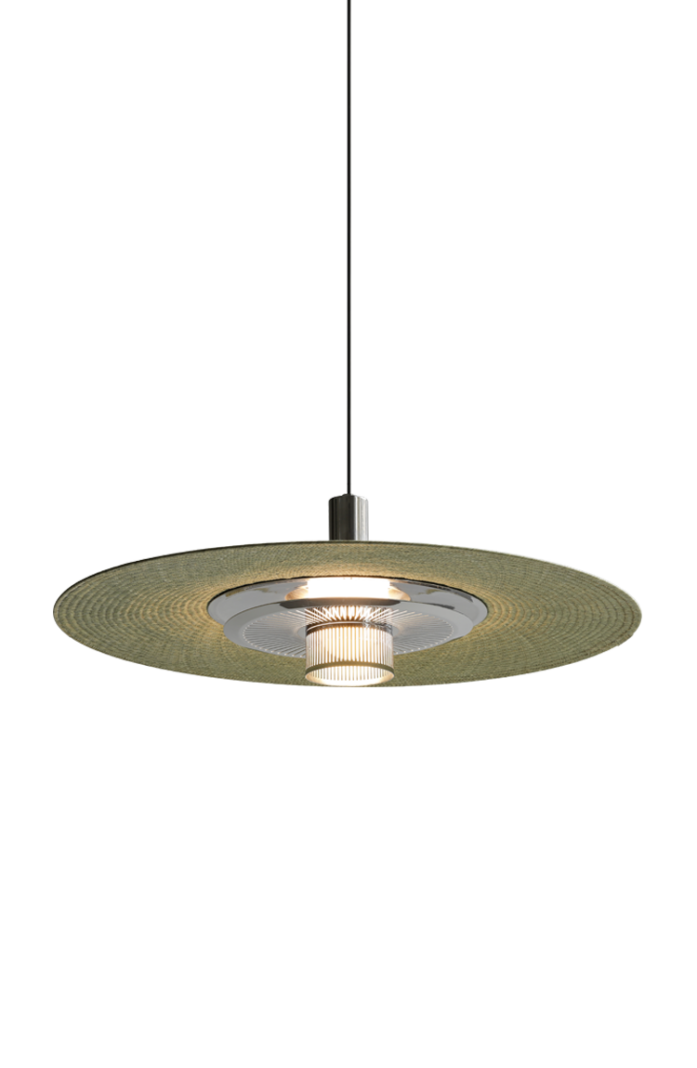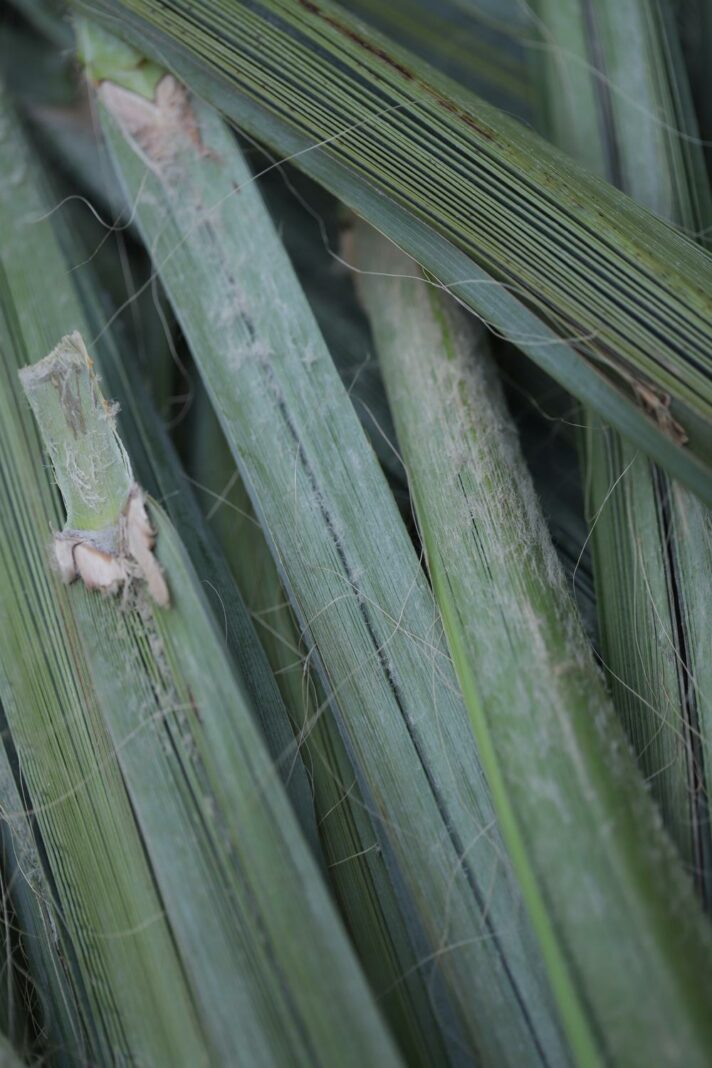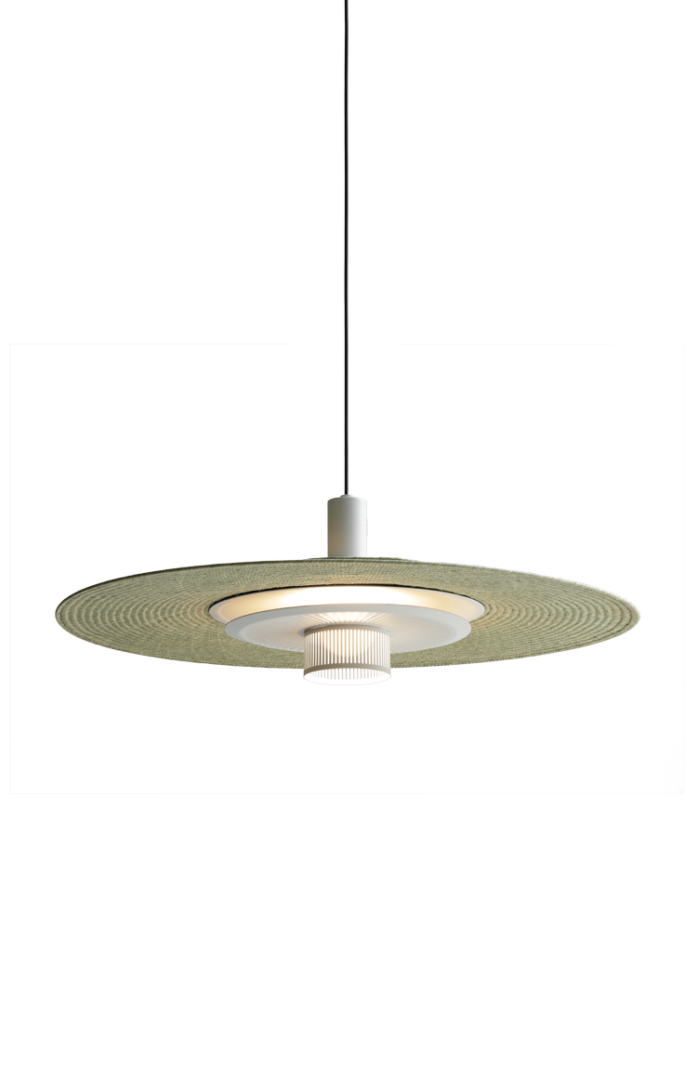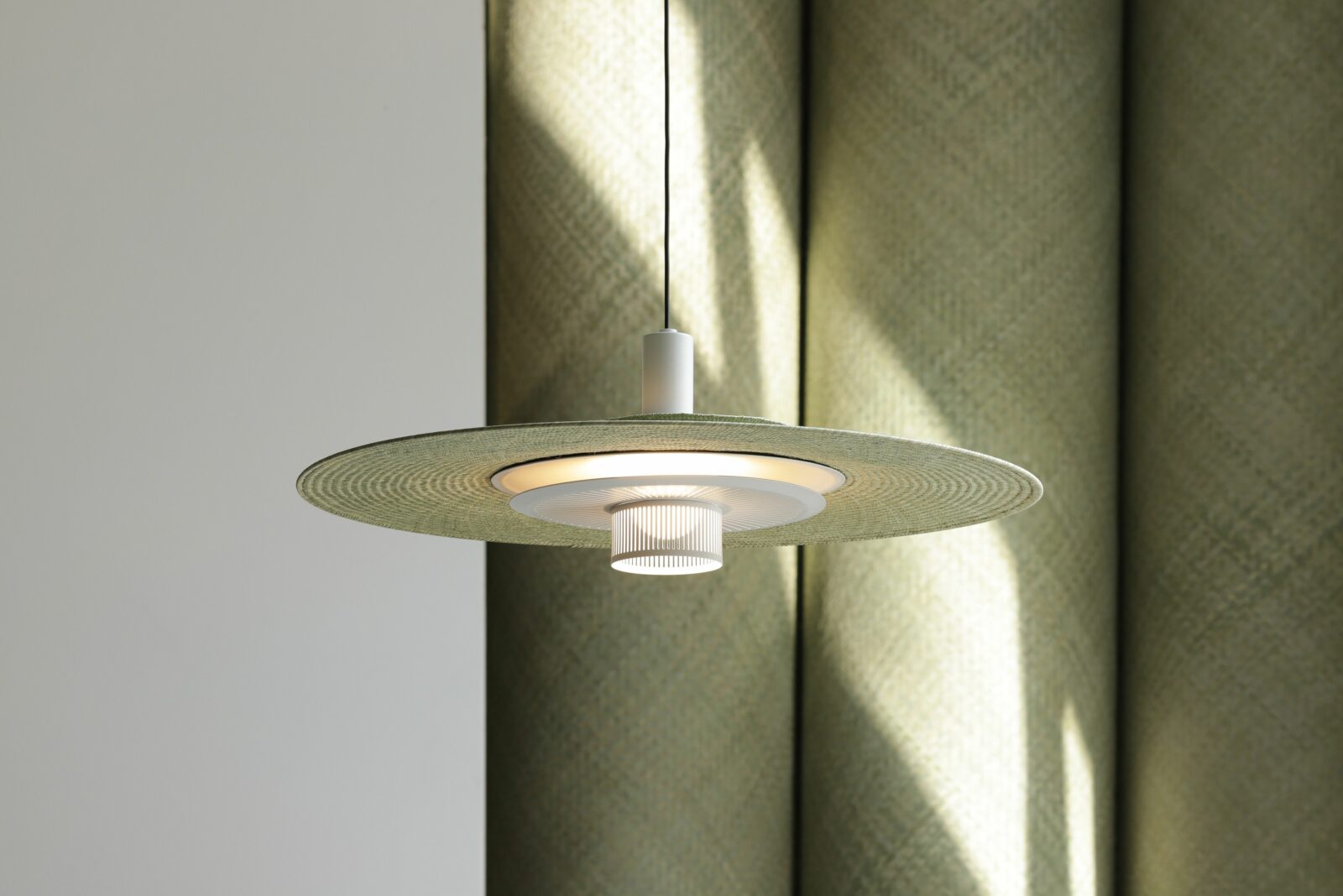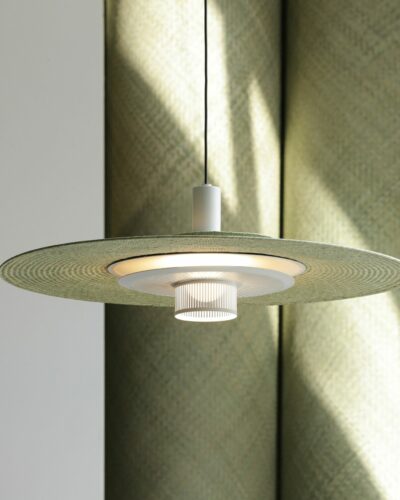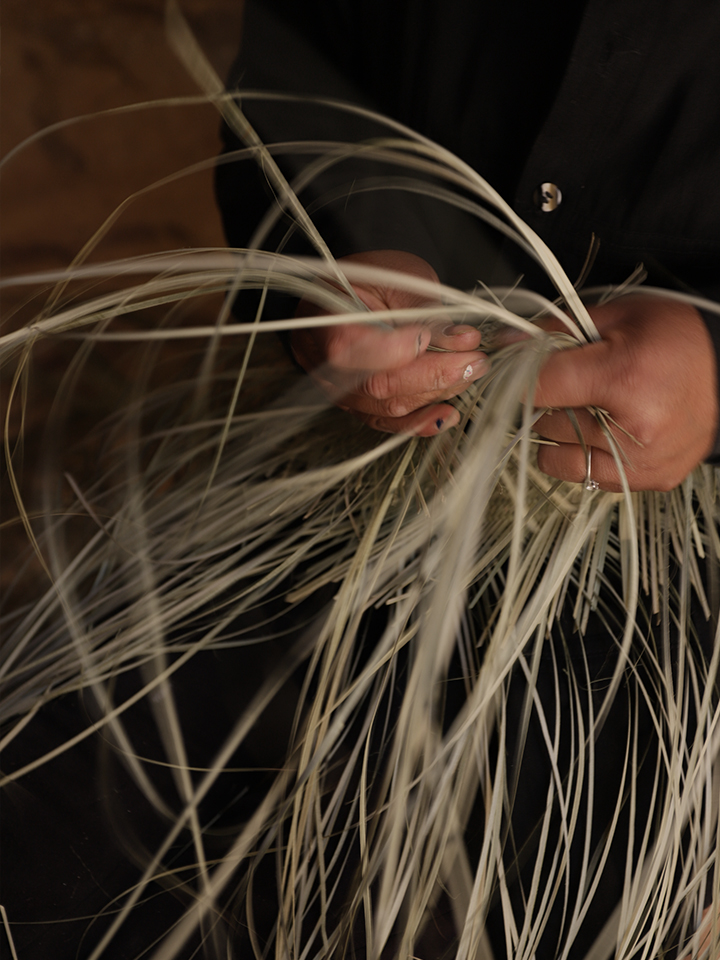
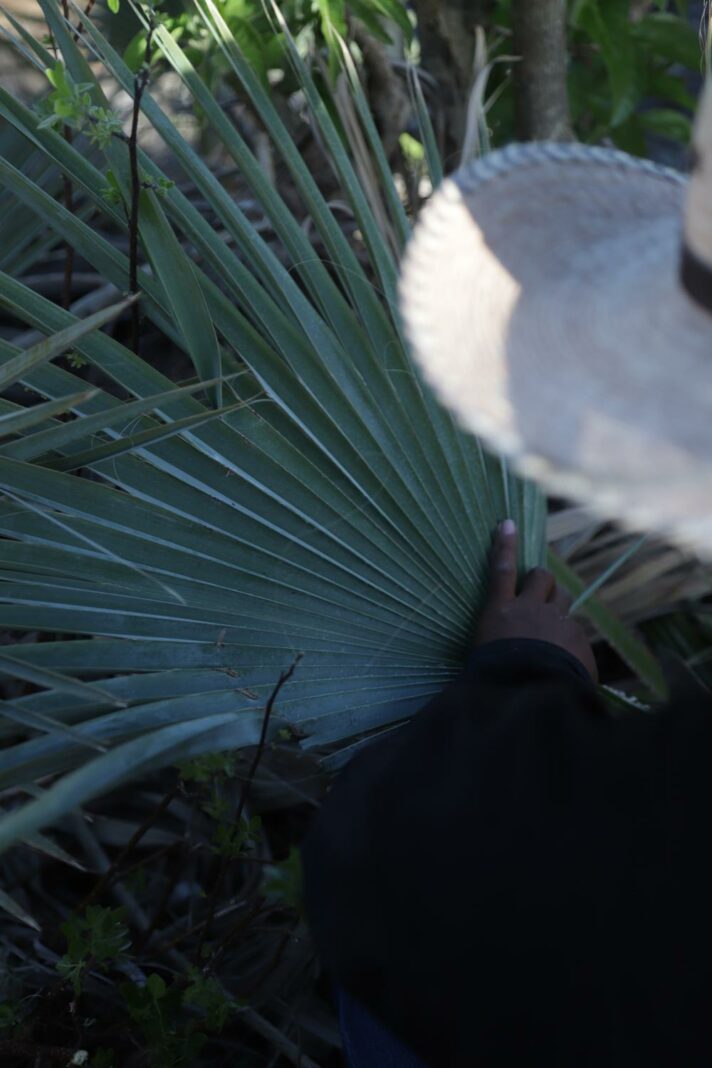
Handwoven Palma,
Underneath the earth in the desert between Oaxaca and Puebla, a unique texture is being created. Palma moves at a speed almost undetectable for the human eye. The craft creates a sonata, a playing duet between palma and wind. The sound invites you to close your eyes: listen to time. A technique inherited for centuries mastered by the best craftswomen in Mexico.
Palma weaving is one of the most iconic and oldest Mexican crafts. Used by pre-hispanic cultures throughout a wide range of applications. Petates, food containers, baskets, sandals, nets and fans to name a few. Its weaving techniques are passed from generation to generation, gifting us nowadays this rich splendid handcraft.
One special location in Mexico for this Palma weaving technique is in the valley of Zapotitlán in Puebla. Green Palma is native to this area, a desert named cactus forest. Women and men from this community have been weaving Palma for many generations.
The weaving of large pieces happens under earth. The fragile material needs a special humidity percentage in order to avoid breakage.
The caves allow women to work in groups of 2 to 5 people, at a comfortable temperature. During rainy season, weaving is done at home. The Palma is first recollected from the neighboring hills, a selection is later done to clean the pieces, and keep the best ones. They are then set to dry for a week, carefully finding the middle point, avoiding burning the leaves and avoiding excess humidity.
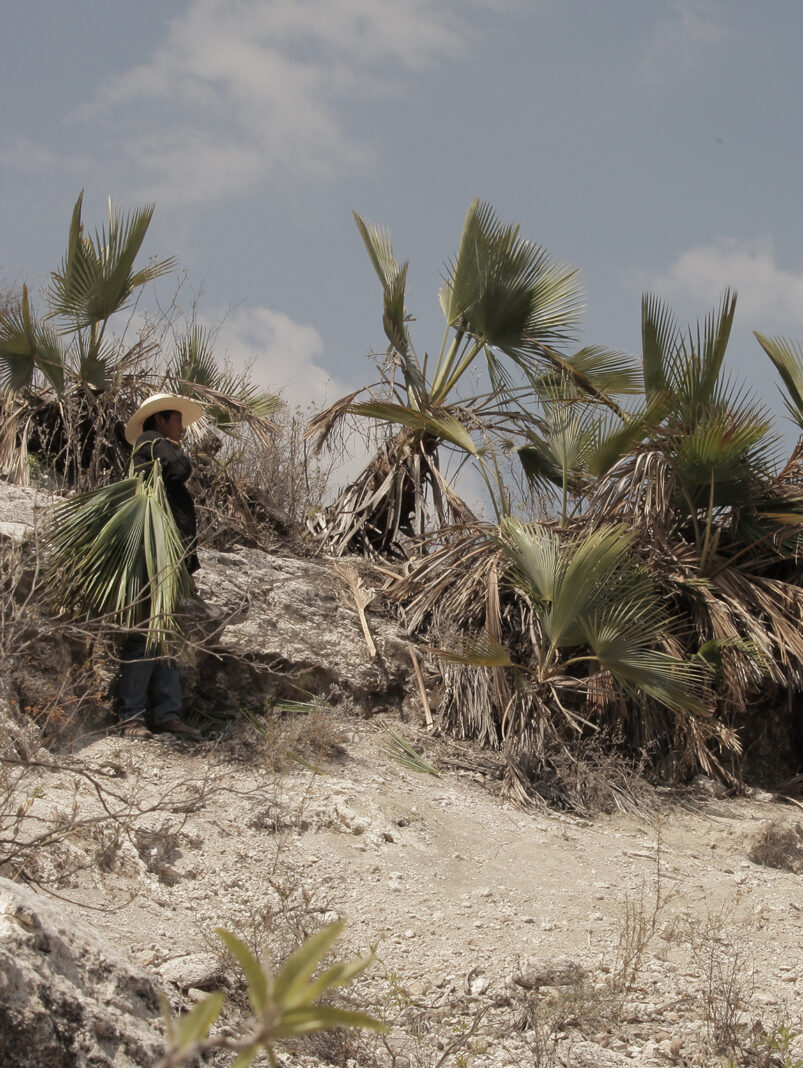

After the drying process, the Palma is cut lengthy with a knife, this step defines how fine the final texture of the weaving will be. Once this is done, the weaving can start. From inside out, the process starts at the center of the piece. The weaving follows a quick movement, which continues for several days.
Their mastered technique is precise and fluent
Palma Process Stages:
1. Cutting Local Palma
2. Hanging Palma to dry for 7 days
3. Selecting the palma with the best texture
4. Cutting the Palma into thin stripes
5. Weaving Process in the caves
6. Cutting the remaining Palma end from the final piece

